Foxtail millet one of the world’s oldest cultivated millets is grown in about 23 countries across Asia, Africa, and America. It is good for human consumption, poultry and cage bird feed, and cattle fodder. Foxtail millet is the world’s second-largest millet producer. Foxtail millet is a highly nutritious grain packed with vitamins, minerals, and antioxidants. This grain is a great source of plant-based protein, fiber, and B vitamins, making it a healthy addition to any diet. In addition, it is naturally gluten-free and has a nutty flavor and crunchy texture.
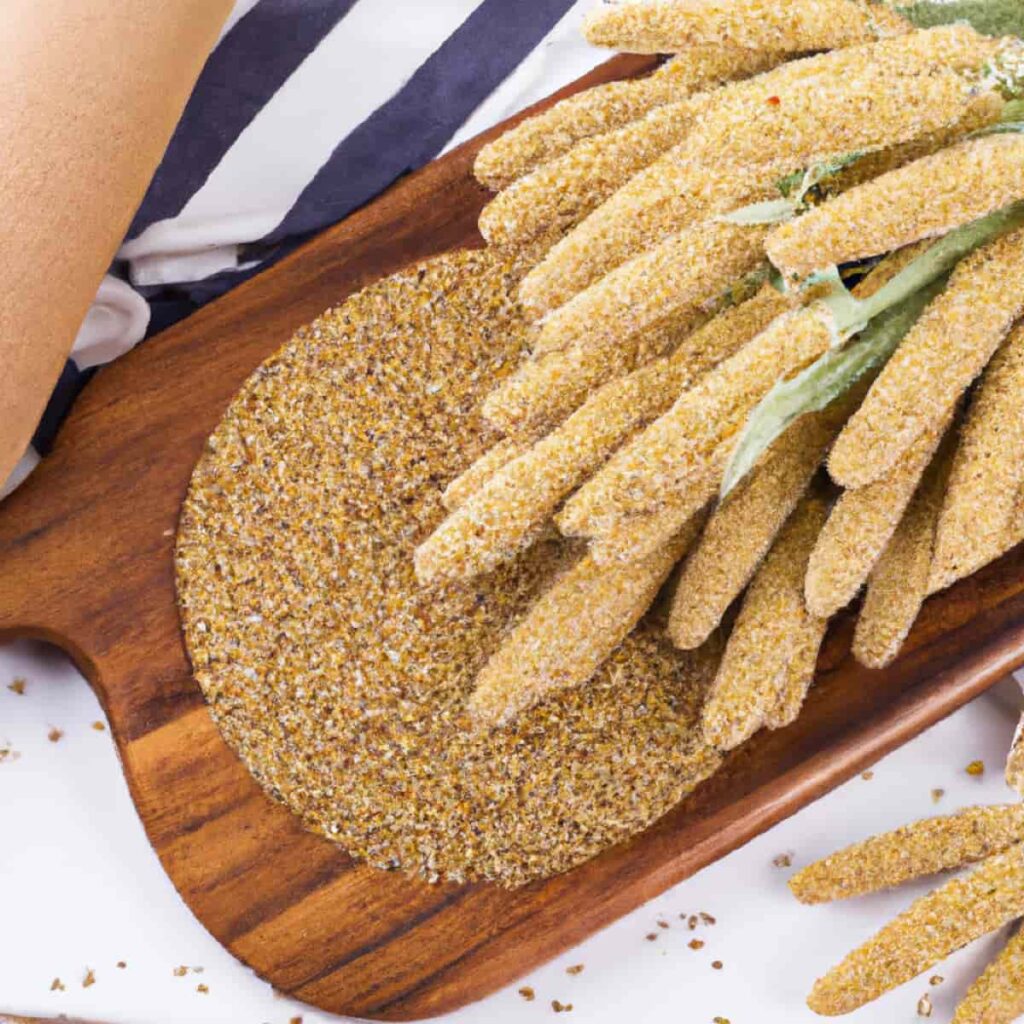
Foxtail millet is an excellent source of dietary fiber, which helps to promote digestive health and maintain a healthy weight. Along with containing dietary fiber, foxtail millet is rich in iron, potassium, phosphorus, magnesium, and zinc. It also contains the antioxidants lutein and zeaxanthin, which are beneficial for eye health. Foxtail millet is an ancient grain that is native to Asia. Let’s check out more information about organic Foxtail Millet farming below.
It has been a staple in Indian and Chinese diets for centuries and is now gaining popularity in other parts of the world. This ancient grain is easy to cook and can be used in various recipes. It can be cooked as a pilaf, in soups, or even added to smoothies for a healthy boost. In addition, it is used as a source of energy for pregnant and lactating women and sick people and children.
Recently, the importance of foxtail millet as a diabetic food has been recognized. It is high in fibre, minerals, micronutrients, and protein and has a low glycemic index (GI). Unlike rice, foxtail millet steadily releases glucose without interrupting the body’s metabolism. It has a high carbohydrate content. When compared to rice, it has twice the protein. Copper and iron are among the minerals found in them.
Organic Foxtail Millet farming
About Foxtail Millet
Foxtail millet is a 90-220 cm tall erect annual grass that is fast-growing, leafy, and tufted. It has a dense root system that is made up of thin adventitious roots. It has erect, slender stems that tiller from the base. The leaves are alternate, 15-50 cm long, and 0.5-4 cm wide. The scientific name of the foxtail millet is Setaria italica.
Different varieties of Foxtail Millet
Many improved and hybrid varieties are grown all over the world. We may not be able to list all of the varieties here. However, some of the high-yielding cultivars are; RAU-1, SiA 3088, SiA 3156, SiA 3085, PS 4 DHFt-109-3, HMT 100-1, Si 3088, SiA 3156, SiA 3085, PS 4, Co 1, Co 2, Co 4, Co 5, K2, K3, SiA. Contact your local agriculture department to find a high-yielding variety that is suitable for your region.
Soil requirements & land preparation of Foxtail Millet
Foxtail millet is a drought-tolerant grain crop that grows well in a wide range of soil types, but it prefers well-drained, loamy soils with a pH range of 6.5-7.5. It can also tolerate slightly alkaline or saline soils, but it may not perform as well. The soil should be tilled to a depth of 4-6 inches and should be generally level.
Fertilizers should be added to the soil to ensure adequate nutrient levels. Weeds should be removed either through hand-weeding or with a herbicide. For best results, Finally, the soil should be leveled and prepared for planting by creating furrows or rows with a hoe or other implement. The millet seeds can then be sown in the prepared rows, spaced appropriately according to the specific variety.
In case you missed it: Barnyard Millet Farming: Production and Cultivation Practices, Planting to Harvesting, and Yield
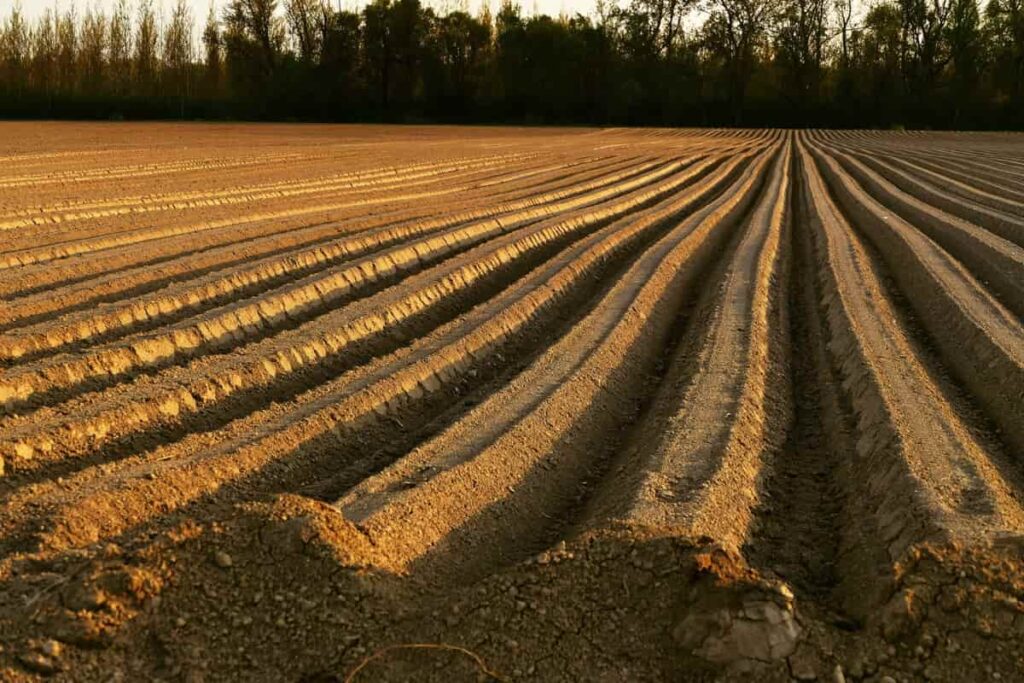
Propagation of organic Foxtail Millet
Organic foxtail millet can be propagated through seed planting. The seeds should be sown in well-draining soil at a depth of about half an inch. They should be spaced about six inches apart and watered regularly until they germinate. It is important to keep the soil moist but not waterlogged, as the seeds will rot if they are too wet. Once the seedlings have grown to a few inches in height, they can be thinned to about a foot apart to allow for proper growth. Foxtail millet grows best in full sun and requires regular watering and fertilization to thrive.
Temperature, rainfall, climate & soil requirement of Foxtail Millet
Foxtail millet is a hardy, drought-tolerant crop, able to grow in various climates. It can be grown in a wide range of temperatures and rainfall conditions but generally prefers a dry, warm environment. The optimum temperature for growing foxtail millet is between 25 to 30°C, with temperatures up to 40°C being tolerated. The crop requires a minimum of around 400-500 mm of rainfall and can tolerate up to 1000-1200 mm of rainfall. It is best grown in light, well-drained soils with a pH between 5.5 and 7.5.
Foxtail millet is a short-duration crop with a growing period of approximately 90-110 days. It can be grown as a double-cropped species in areas with an extended summer season. It is very sensitive to frost and should be planted as soon as the soil warms up in the spring. Foxtail millet is an important food crop in semi-arid regions and is extremely tolerant of drought and extreme temperatures. Therefore, knowing the climatic requirements of the crop is essential for successful cultivation.
The crop grows best in soil well-drained, slightly acidic, and high in organic matter. It is also tolerant to salinity, so it can be grown in soils with high levels of salt. When planting, it is important to prepare the soil properly by adding plenty of compost and other organic material. This will help to increase the soil’s fertility, enabling the crop to produce higher yields. Additionally, Foxtail Millet is quite tolerant to drought, making it a popular option for farmers in drier climates.
Seed treatment & seed germination of Foxtail Millet
Seed treatment is essential for disease prevention and fungus protection of young roots. It can be done organically. Organic seed treatment with Beejamrut. The first step in germinating foxtail millet is to soak the seeds in water for 12 to 24 hours. This will soften the hard outer coating and allow the seed to absorb the necessary moisture for successful germination. Once the seeds have been soaked, spread them out on a damp paper towel in a shallow dish and place them in a warm, sunny area.
In case you missed it: Red Banana Farming in India: How to Start, Cultivation Practices, and Panting to Harvesting Guide
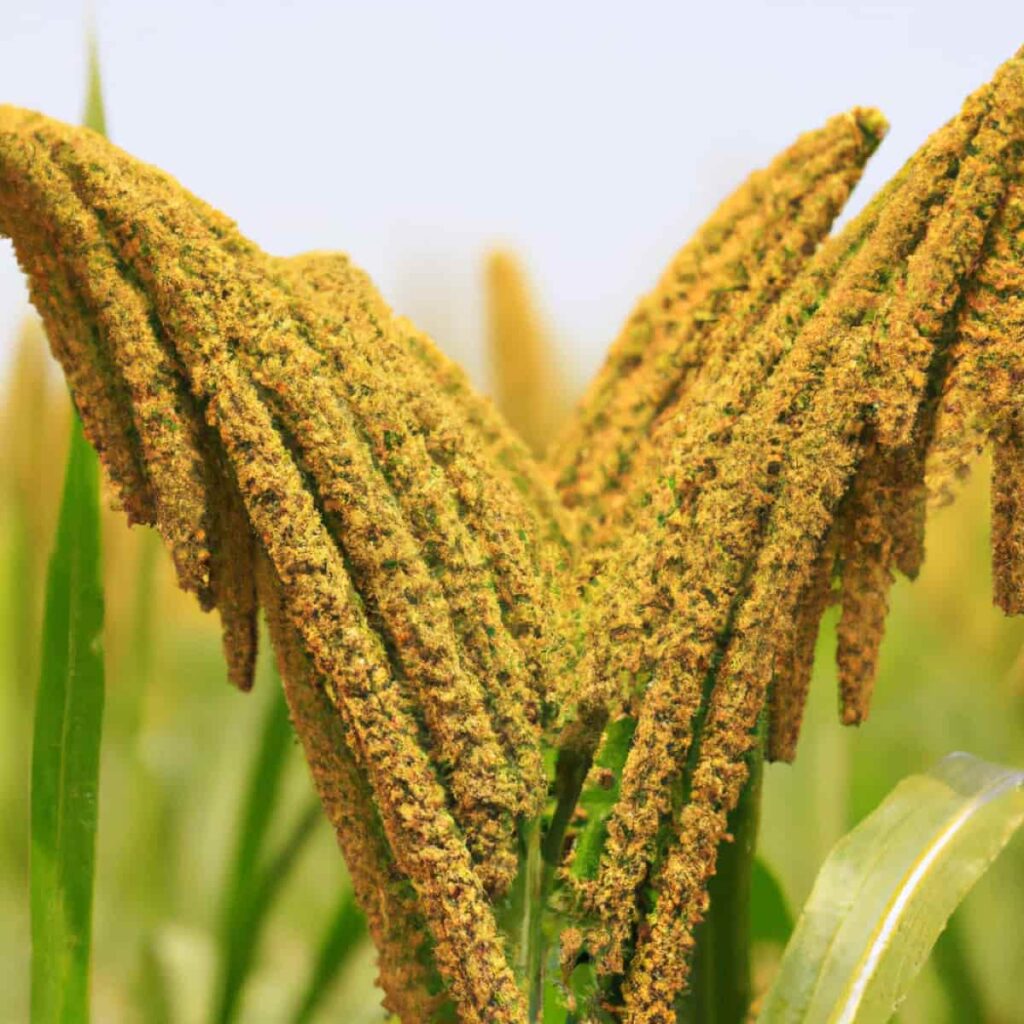
Make sure to check the paper towel regularly and keep it moist. The seeds should start growing after a few days. You can also germinate foxtail millet directly in the soil. Use loose, well-draining soil and a shallow container for best results. Plant the seeds in the soil and lightly water them. Keep the soil damp, but not wet The seeds should begin to grow within a week or two. Once the seeds have sprouted, they should be transplanted into larger containers or in the ground.
Seed rate for Foxtail Millet farming
The recommended seed rate for Foxtail millet is about 8-10 kg/ha for line sowing and 15 kg/ha for Broadcasting. This rate can vary depending on factors such as soil type, climate, and the variety of Foxtail millet being planted. If a higher seed rate is used, it can lead to excessive weed growth, while a lower rate can lead to poor germination and low yields. Adjusting the seed rate accordingly is important to ensure the best possible results. Additionally, it is important to ensure the seeds are of good quality.
Spacing between plants in Foxtail Millet farming
Plant to plant: 8-10 cm; row to row: 25-30 cm. The seed should be planted at a depth of 2-3 cm.
Manure and bio-fertilizers used in Foxtail Millet farming
Organic manure and biofertilizers are two options for fertilizing foxtail millet and providing the nutrients the plants require to grow. Organic manure is a fertilizer made from decomposed plant or animal matter. It’s high in nutrients like nitrogen, phosphorus, and potassium and micronutrients like iron, zinc, and copper. Compost, bone meal, and blood meal are examples of common organic manure. These materials can be mixed into the soil before planting or used as a side dressing throughout the growing season.
Biofertilizers are living microorganisms that are added to soil to help plants grow. They can include bacteria, fungi, and other microorganisms that aid in nitrogen fixation, phosphorous solubilization, and plant growth. Biofertilizers can be applied to the soil as a liquid or granule and can be used alone or in conjunction with other fertilizers.
When using organic manure or biofertilizers to fertilize foxtail millet, it is important to follow the recommended application rates and consider the plants’ specific nutrient needs. It is also a good idea to test the soil before applying any fertilizers to determine the appropriate application rate and to ensure that the plants are receiving the nutrients they need. In addition to fertilizing, it is also important to practice good soil management techniques, such as rotating crops and adding organic matter to the soil, to help improve soil structure and fertility.
Apply compost or farmyard manure at a rate of 5-10 tonnes per hectare about a month before sowing. Some organic fertilizers that may be suitable for foxtail millet include compost, bone meal, blood meal, and fish emulsion. These fertilizers can be applied to the soil before planting or as a side dressing during the growing season.
In case you missed it: Earning 31 Lakhs from 9 Acre Jamun Farm: The Success Story of a Fruit Farmer in India
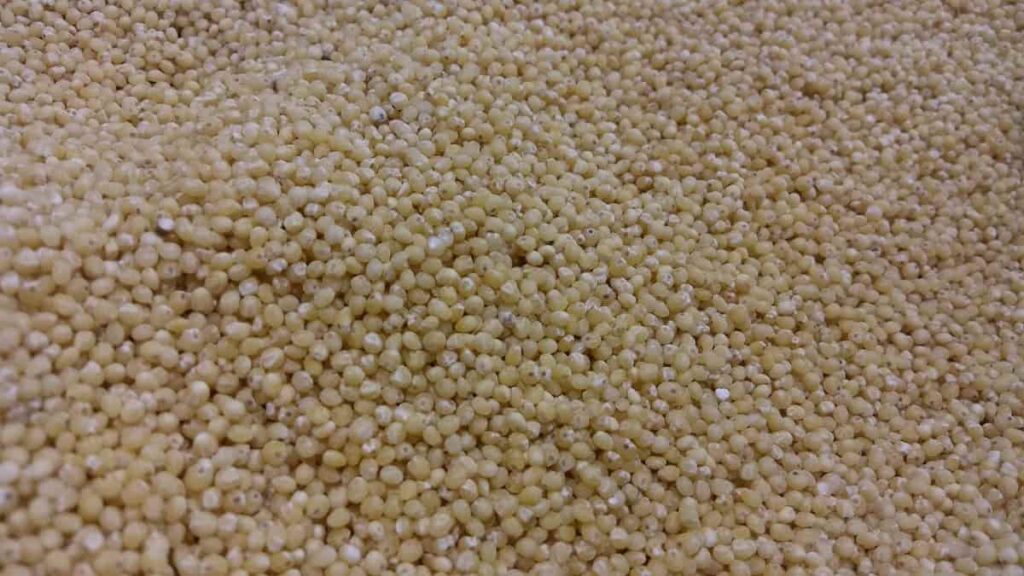
Foxtail Millet weeding and intercultural operation
Two inter-cultivations and one-hand weeding are recommended in a line-sown crop. When the crop is 30 days old, an intercultural operation with a Tyne-harrow is also recommended. In a broadcast crop, the first weeding should be done after 15 – 20 days of seedling emergence, and the second weeding should be done 15-20 days after the first weeding.
Foxtail Millet water management
Water management is an integral part of any Farming system. By properly managing water resources, farmers can ensure that their crops are not harmed by early or excess moisture. This is especially true for foxtail millet, a drought-tolerant crop that thrives in dry conditions. Foxtail millet requires regular watering during the early growth stages, but it can tolerate dry conditions once the plants are established.
To conserve water, farmers can use a variety of techniques such as crop rotation, mulching, and irrigation scheduling. Crop rotation prevents the soil from becoming waterlogged by allowing different crops to be planted in the same field over time. Water foxtail millet every 4-5 days during the early growth stages and reduce watering to once a week when the plants are established. Mulching helps retain moisture in the soil and reduces the amount of water needed for irrigation.
Lastly, farmers can determine the best time to irrigate their foxtail millet crop based on the weather conditions and soil moisture levels. Farmers can help ensure efficient water management and healthy foxtail millet harvests by taking these steps. Irrigation is not required for rainfed areas. It is primarily a rainfed crop. However, if the dry spell lasts for an extended period, 2-3 irrigations should be given. Summer crops require 2-5 irrigations, depending on soil type and climate.
Farmers should plant resistant varieties, use pesticides if necessary, and practice proper sanitation to prevent and manage pests. In addition, crop rotation, using natural predators and parasites, and using insect traps can help control pest populations.
In case you missed it: How to Start Dairy Farming in Cambodia: Key Rules, Business Plan, Breeds, Cost, Profit, License, and Management
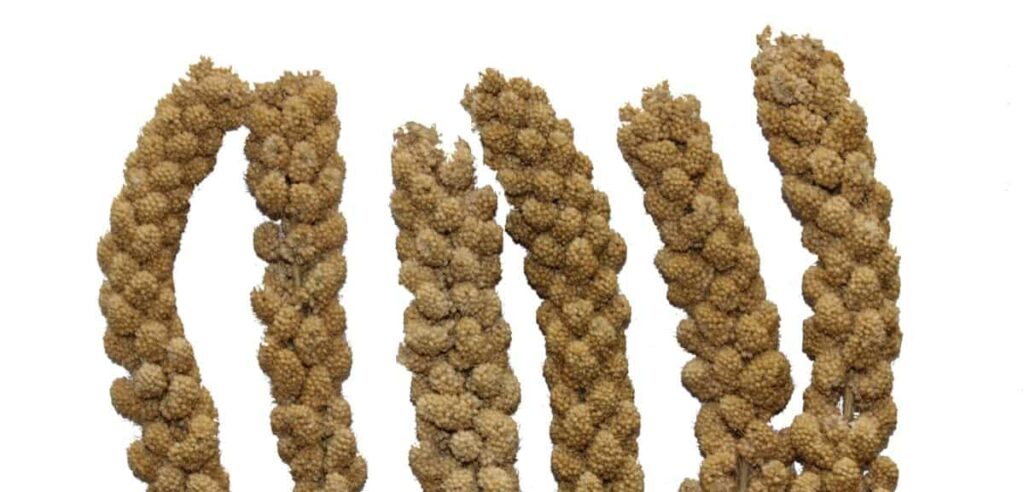
Organic management of pests in Foxtail Millet farming
Armyworm, cutworm, and leaf-scraping beetle can all cause significant crop damage. Although the shoot fly is not a common pest, it can be found in certain areas. Shoot fly causes crop damage from seedlings to six-week-old crops. The central shoot begins to dry as a result of feeding, with the typical appearance of a dead heart in the early stage and profuse tillering in the later stage.
Damaged tillers may yield ear heads but no grains. Therefore, it is controlled by sowing early, within 7-10 days of the onset of the monsoon. However, proper management and prevention are still needed to ensure a successful, healthy crop. Common diseases of foxtail millet include stem and head smut, leaf spot, and rust.
- Use crop rotation to prevent the build-up of pests and diseases in the soil.
- Practice good field sanitation by removing and destroying infected plant debris.
- Use natural predators such as ladybugs and lacewings to control pests.
- Use organic pesticides made from neem oil or garlic to control pests.
- Use organic fertilizers such as compost or manure to promote healthy plant growth and reduce susceptibility to pests and diseases.
- Practice proper watering techniques to prevent the spreading of diseases caused by excess moisture.
- Implement biological control methods such as using beneficial fungi and bacteria to control pests and diseases.
- Use reflective mulches or traps to deter pests.
- Plant various crops in the same field to create a diverse ecosystem and reduce the impact of pests and diseases on a single crop.
Harvesting of Foxtail Millet
Harvesting foxtail millet is an important part of the farming process. Foxtail millet is a short-season crop, maturing in 80-90 days; it can be done by using a sickle by cutting the whole plant or only the earheads. So, it’s important to keep an eye out for the right time for harvesting. Under ideal conditions and with proper agronomic practices, grain yield can range between 15 to 18 quintals per hectare. The best time to harvest foxtail millet is when the heads turn golden yellow and the stems turn brown and dry.
This usually happens when the grains are mature and ready for harvesting. If harvested too early, the grains will be small and won’t have the same flavour and nutrition. Harvesting foxtail millet is best done in the morning when dew still covers the crops. This will make it easier to thresh and winnow the grains. Using a sharp sickle or scythe is also important when harvesting foxtail millet. This will help reduce damage to the crop, which can affect its productivity.
In case you missed it: How to Grow Alfalfa from Seed: A Guide to Planting to Harvesting
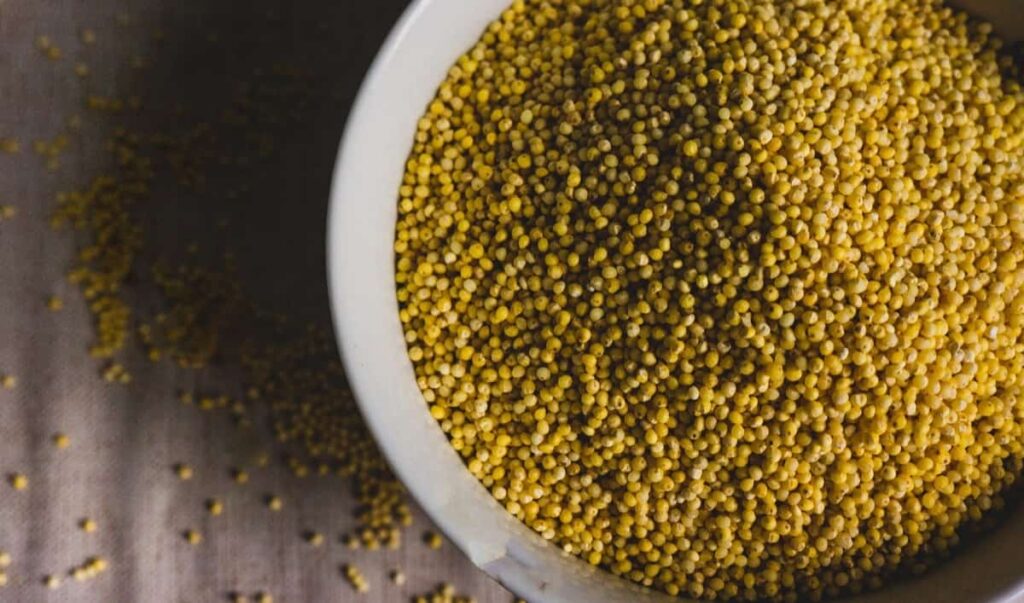
Storage of Foxtail Millet farming
Foxtail millet should be stored in a dry and well-ventilated place, preferably in a cool, dark location. It is important to keep the millet away from moisture and heat, as these can cause the grains to spoil or become infested with insects. The millet should be stored in airtight containers or bags, such as plastic or metal bins with tight-fitting lids or cloth sacks.
These containers will help to prevent moisture and pests from getting into the millet. It is also a good idea to store the millet in a separate location from other grains or seeds, as cross contamination can occur if different types of grains are stored together. Proper storage of foxtail millet will ensure that it stays fresh and free from pests, and can be used for a long time.
- Crops Grown in Summer Season: Best Choices for Summer Gardening
- Organic Pest Control for Tomato Farming
- How to Maximize Sheep Farming Profit
- Broccoli Varieties: Choosing the Right Cultivars for Your Farm
- How to Raise Pigs in Your Own Backyard: A Comprehensive Guide
- Budget Friendly Sheep Shed Ideas: Cheap and Low-Cost Tips
- How Much Do Cattle Farmers Make: Revenue Streams in Cattle Farming
- Management Pests and Diseases in Your Cotton Field
- Sheep Farming Business Plan for Beginners
- Aquaponic Farming at Home: A Step-By-Step Guide
- Profitable Village Farming Business Ideas in 2024
- High-Yield Aquaculture: Fast-Growing Fish for Farming
- Effective Fish Pond Construction Techniques for Beginners
- Irrigation and Water Management in Pineapple Farming
- Blossom to Harvest: Mastering Flowering and Pollination in Papaya Farming
- Pig Fattening Essentials: From Selection to Sale for Beginners
- Raising Wagyu Cattle: A Complete Guide for Premium Beef Production
- Soil Types and Their Water Holding Capacity
- Optimizing Irrigation Schedules for Coconut Groves for Enhanced Yield
- Espresso Your Garden: Coffee Grounds for Healthier Acid-Loving Plants
- The Best Soil Mix for Snake Plants: How to Mix Your Own Snake Plant Soil
- Green Thumb Success: Expert Tips for Cultivating Greenhouse Beans All Year Round
- Bloom All Year Round: The Ultimate Guide to Indoor Hyacinth Care
- Eco-Friendly Gardening: How to Make Liquid Fertilizer from Kitchen Waste
- Ultimate Guide to Grow Anise in Pots: Explore Seed Propagation to Harvesting
- Guide to Raising Chester White Pigs: Discover Breed Facts to Growth Management
- Mastering the Elegance: The Ultimate Guide to Weeping Cherry Tree Care, Planting, and Maintenance
- Ultimate Guide to Planting Garlic in Grow Bags: Growing Strategies for Beginners
- How to Fix Spider Plant Leaf-Related Problems: Natural and Organic Remedies
- 10 Reasons Why Your Tulsi Plant is Shedding Leaves: Home Remedies and Solutions
- Optimizing Growth and Yield: The Advantages of Palm Bunch Ash Fertilizer
- Utilizing Neem Oil Extract as a Natural Pesticide for Hydrangea
- From Soil to Harvest: Various Ways in Which Farmers Can Use AI Tools
- Steps to Encourage and Induce Citrus Flowers: A Comprehensive Guide
- How to Fix Snake Plant Leaf-Related Issues: Natural and Organic Remedies
- Transform Your Garden into a Fragrant Oasis with Raat Ki Rani (Night Blooming Jasmine)
